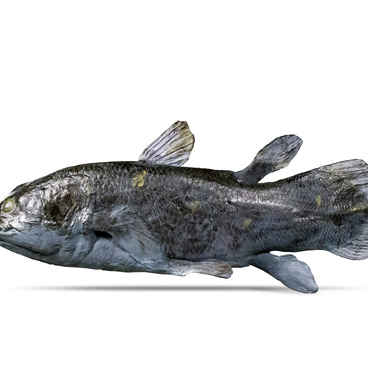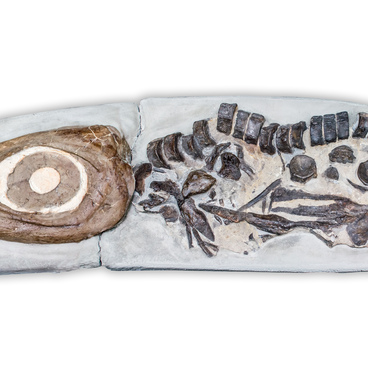Kamacops is a genus of extinct amphibians from the group of temnospondyls, the ancestors of modern amphibians. The skeleton, which is kept in the collection of the Natural History Museum of Tatarstan, was discovered in the Yezhovo section in the Perm Region. This place is known as one of the largest burials of creatures of the Permian period. In Soviet times, the largest paleontological excavations in the country took place here. Thanks to them, scientists discovered 11 species of ancient animals, which received the common name Ocher fauna — from the name of the city of Ocher. The Yezhovo section is located in its vicinity.
The name kamacops literally means short muzzle from Kama. These animals lived on the territory of modern Russia 265 — 268 million years ago. They had a small strong body up to 1.5 meters long, four short limbs, a powerful flat skull, the length of which reached 25 — 30 centimeters, and therefore, the head seemed huge concerning the body. The eye sockets of Kamaсops were not directed to the sides, but upward — almost like those of modern crocodiles. Probably they spent more time in the water than other representatives of the same family — Cacops and Zygosaurus.
Bone ridges surround the edges of the orbits and the parietal foramen on the skull of Kamacops. This trait is characteristic of animals with thick skin. The scientists did not find any traces of scales in these creatures, but they could have had a semblance of a shell on their back — several paired rows of bone plates that connected to the vertebral processes.
The ears of Kamacops were located behind the eyes. Inside, they were arranged almost the same way as in modern people; only the eardrum was located outside. Probably, it also served as a protection of the auditory canals from water ingress.
What Kamacops ate is not precisely known. According to the structure of their jaws, they were predators and could hunt both on land and in water. Their powerful hind legs hardly allowed them to jump, but most likely helped to grab prey in a short throw. Probably, if there was no other food, Kamacops did not neglect carrion either: this is evidenced by the traces of their teeth on the bones of other animals that paleontologists found at different times.
The name kamacops literally means short muzzle from Kama. These animals lived on the territory of modern Russia 265 — 268 million years ago. They had a small strong body up to 1.5 meters long, four short limbs, a powerful flat skull, the length of which reached 25 — 30 centimeters, and therefore, the head seemed huge concerning the body. The eye sockets of Kamaсops were not directed to the sides, but upward — almost like those of modern crocodiles. Probably they spent more time in the water than other representatives of the same family — Cacops and Zygosaurus.
Bone ridges surround the edges of the orbits and the parietal foramen on the skull of Kamacops. This trait is characteristic of animals with thick skin. The scientists did not find any traces of scales in these creatures, but they could have had a semblance of a shell on their back — several paired rows of bone plates that connected to the vertebral processes.
The ears of Kamacops were located behind the eyes. Inside, they were arranged almost the same way as in modern people; only the eardrum was located outside. Probably, it also served as a protection of the auditory canals from water ingress.
What Kamacops ate is not precisely known. According to the structure of their jaws, they were predators and could hunt both on land and in water. Their powerful hind legs hardly allowed them to jump, but most likely helped to grab prey in a short throw. Probably, if there was no other food, Kamacops did not neglect carrion either: this is evidenced by the traces of their teeth on the bones of other animals that paleontologists found at different times.



